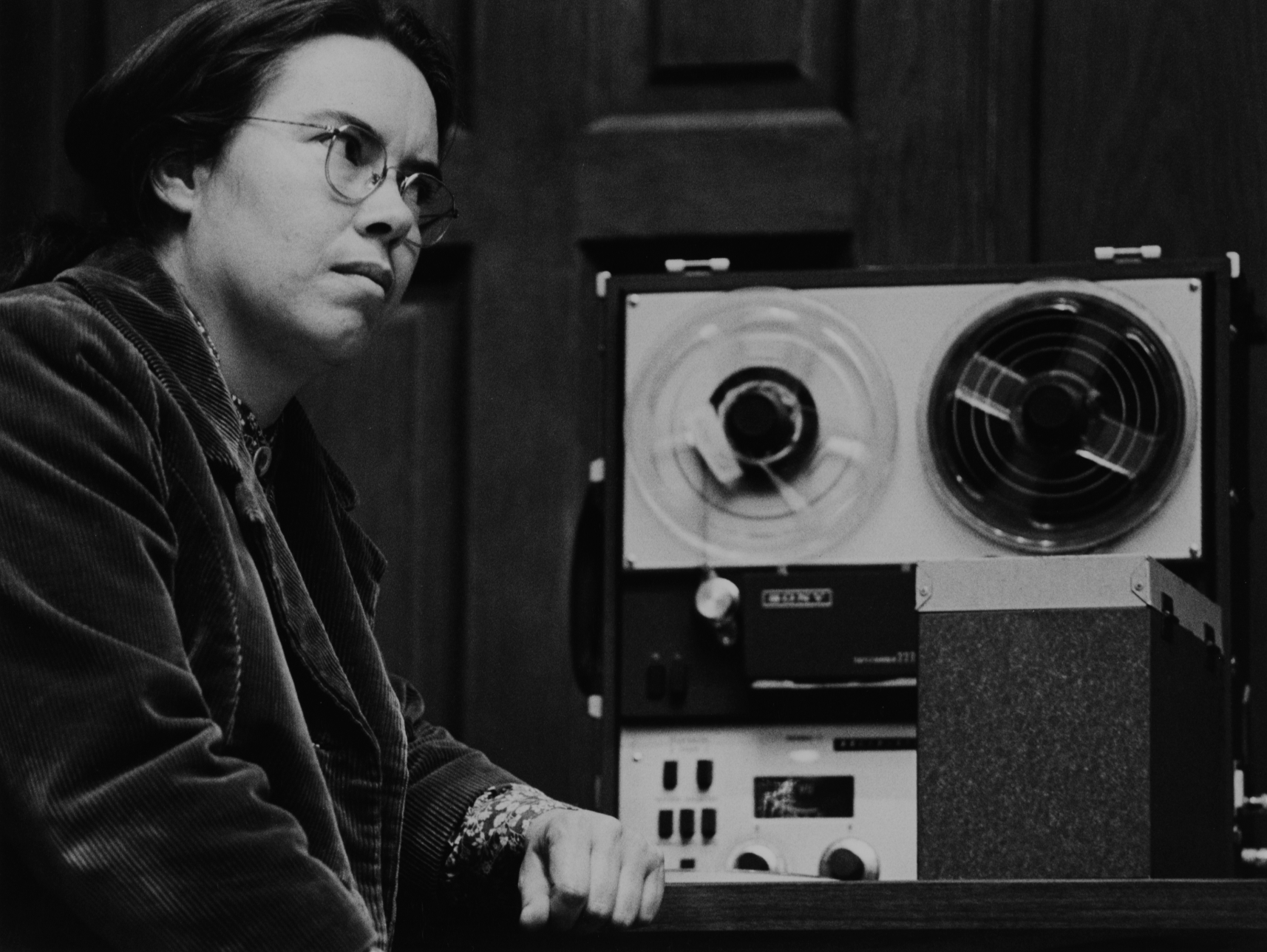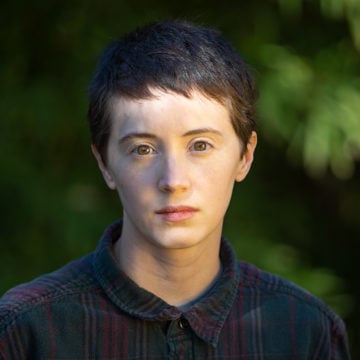
Pauline Oliveros Emerges From The Underground
An underrecognized composer finally gets the acknowledgment she deserves.

A version of this story ran in the December 2021 Special Double Issue issue.
The mythos of Pauline Oliveros begins, in many tellings, underground.
In the fall of 1988, the Houston-born composer and accordionist crawled with her friend, composer Stuart Dempster, into a 2-million-gallon cistern below a decommissioned U.S. Army base in Washington state. What was so special about this particular cistern? It had a 45-second reverb time, which meant that it took nearly a minute for sound to fade away. Oliveros and Dempster, along with two other musicians, carried their instruments 14 feet down a manhole to play. The result was the project that was, in many ways, the culmination of her life’s work: “Deep Listening.”
Oliveros was a pioneer of experimental and electronic music, influencing artists like John Cage and Philip Glass. She died on November 24, 2016, but her legacy—something she herself was never especially concerned about—lives on, particularly through the practice she called deep listening. This practice explores the difference between hearing and listening: “learning to expand the perception of sounds to include the whole space-time continuum of sound,” Oliveros said in a 2015 TED Talk.
Oliveros grew up in Houston surrounded by music. Her mother, Edith Gutierrez, and grandmother Pauline Gribbon gave piano lessons from their home. She got started with the practice of listening young: Riding in the car, she enjoyed listening to the motor and the way it modulated her parents’ voices. She was “fascinated with the in-between sounds of the [radio] station,” she said in the documentary Sisters With Transistors. She grew up listening to the 1930s soundscape of Houston, which at the time included “chirping, rasping crickets, frogs, and melodic mocking birds,” she wrote in Deep Listening: A Composer’s Sound Guide. Oliveros would go on to learn violin, piano, tuba, and French horn. At the age of 16, she decided she wanted to be a composer and got her first accordion.
She figured she’d have to leave Texas to pursue her music, according to her partner and collaborator, IONE. In the 1950s, Oliveros found herself in San Francisco. It was there that she received her first tape recorder—a birthday gift from her mother. She was fascinated by the sounds outside her apartment and started to do field recordings at her window, soon getting to work on an influential tape piece called “Time Perspectives.”
During her time at what was then San Francisco State College, she met Dempster and other future collaborators. She got involved with the San Francisco Tape Music Center, a hub for the fledgeling field of electronic music and interdisciplinary art. There she met musicians who shared equipment, as well as poets, painters, and filmmakers. When the San Francisco Tape Music Center moved to Mills College (where it was called the Mills Tape Music Center and later the Center for Contemporary Music), she served as its first director.
Oliveros was always thinking about listening and consciousness, and she didn’t ignore the body’s role in either. She studied tai chi, “finding the coördination of breath and movement complementary to her music,” according to the New Yorker. She studied kinetic awareness, a practice that directs students to become sensitive to signals from their bodies, with dancer Elaine Summers. In the 1970s, in conjunction with the women’s liberation movement, Oliveros founded a performing group, incorporating her education in somatic practices. They called themselves the Ensemble, and their weekly sessions included a mix of text scores, journaling, discussion, and kinetic awareness exercises, according to the New Yorker.
“She was a pioneering woman in electronic music, a pioneering improviser, a pioneering accordion player, a pioneering feminist, a pioneering gay woman coming out when that was daring,” classical music critic Mark Swed wrote in the Los Angeles Times after her death. Feminism was central to Oliveros’ work. In some ways, it had to be: “She’d come out in the ’50s. And here she was, a woman, gay, avant-garde,” said composer Ramon Sender. “Each thing by itself would be hard, but she had three things that were hard. And women composers were not being performed.”
As the decades passed, Oliveros further developed her ideas around listening, eventually becoming “more interested in the sounds themselves than what I could do with them,” Oliveros said. In 1989, a year after she found herself in the cistern, Oliveros coined the name “deep listening,” and soon after began hosting retreats to teach the practice. “The ear hears, the brain listens, the body senses vibrations,” Oliveros said in her TED Talk six years ago. “Listening is a lifetime practice that depends on accumulated experiences with sound.”
It was through deep listening that Oliveros had her most profound impact on her hometown of Houston. Oliveros mentored David Dove, one of the founders of the organization that eventually became Nameless Sound. Today, Nameless Sound provides music education for Houston youth. And in 2019, Houston’s Discovery Green, a public park downtown, hosted a tour of deep listening music, with performances by IONE, Tom Bickley, and Heloise Gold.
In the years before her death, Oliveros finally began to get more recognition. Her compositions have been performed across the United States in recent years, sometimes with the cistern’s effect re-created for “Deep Listening,” a piece with the same name as the practice. After her death, Oliveros went viral—aboveground, so to speak—for her so-called sonic meditations: whimsical sound exercises that instruct participants to do things like “Take a walk at night. Walk so slowly that the bottoms of your feet become ears.”
Oliveros was “authentic,” IONE told me—there wasn’t a difference between her personal and private persona—and concerned less with her own legacy than the passing on of her teachings and work for the benefit of others. In 1993, Oliveros wrote: “In order for us to survive, there has to be creative action, creative expression at every level of society without exception. This feeling that one gets from realizing and expressing something of the spirit is missing. It’s not available to everyone, and it needs to be. This is what is the passion of my life and why I keep doing what I’m doing. I think it’s essential to go on.”



